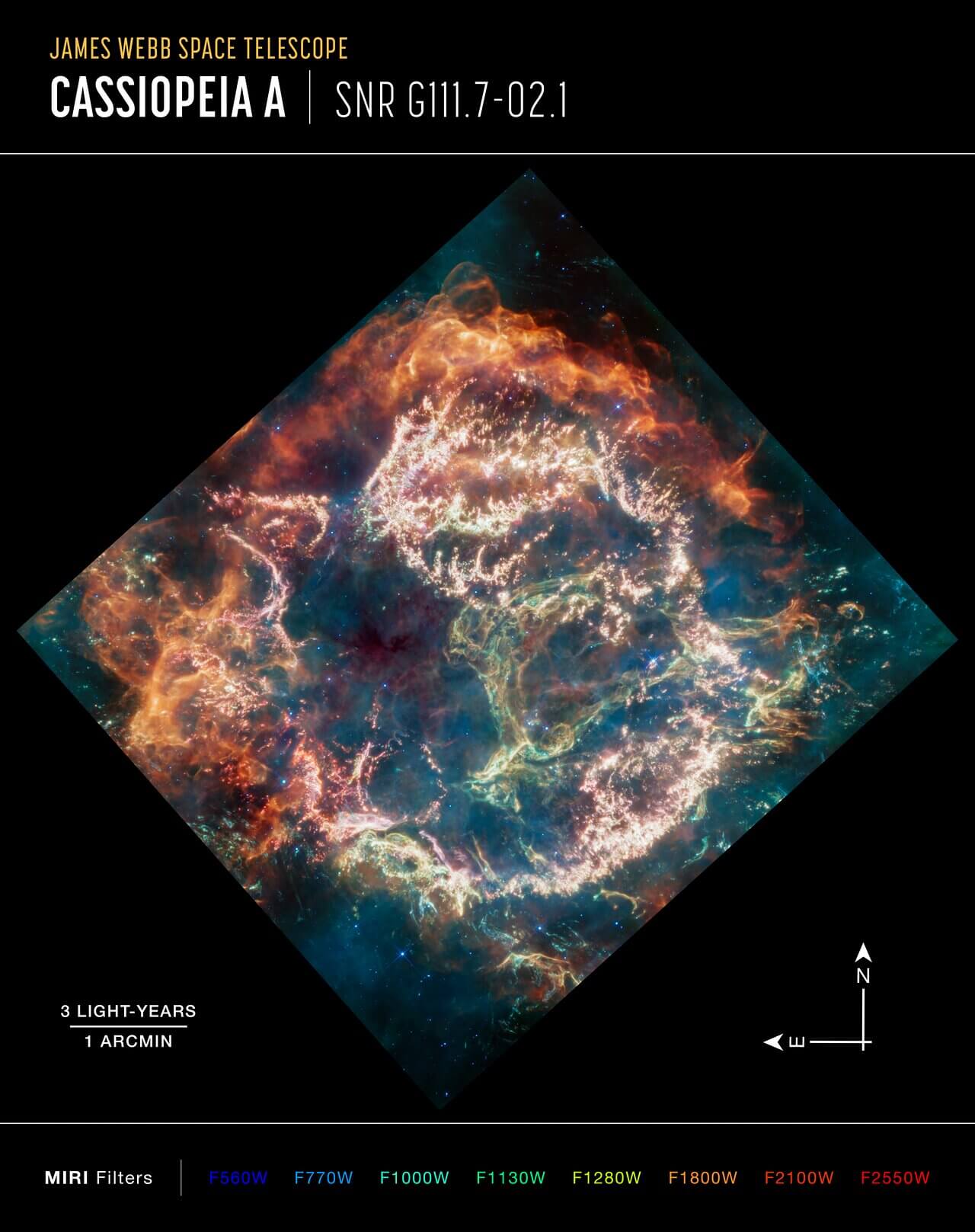Webb recorded what remained after the death of a star only 11 thousand light years away from us, it is a relatively new supernova - only 350 years old

Cassiopeia A is a typical supernova remnant that has been extensively studied by several ground-based observatories and space telescopes. The multi-wavelength observations can be combined to provide scientists with a more comprehensive understanding of the remains.
The striking colors of the new Cas A image, in which infrared light is translated into visible light wavelengths, hold a wealth of scientific information that researchers are just beginning to crack. In the outer part of the bubble, mainly in the upper and left part, curtains of a material seen here in orange and red colors are spread, originating from the emission of hot dust. These curtains mark where the material ejected from the exploded star collides with the surrounding gas and dust.
In a layer more internal to this outer shell, mottled threads in light pink colors are visible interspersed with lumps and knots. This configuration represents material from the star itself, which glows with light produced by a mixture of heavy elements, such as oxygen, argon and neon, as well as dust emission.
The dust from which life was also created
One of the scientific questions that Cas A may help answer is where does the cosmic dust come from? Observations have found that even very young galaxies in the early universe are soaked in huge amounts of dust. It is difficult to explain the origins of this dust without linking it to supernovae, which eject large amounts of heavy elements (the building blocks of dust) across space.
However, existing observations of supernovae have not been able to conclusively explain the amount of dust we see in these early galaxies. By studying Cas A with the Webb Space Telescope, astronomers hope to gain a better understanding of its dust content, which could help us understand where the building blocks of planets—and ourselves—form.
Supernovae like the one that created Cas A are critical to life as we know it. They spread elements like the calcium we find in our bones and the iron in our blood across interstellar space, seeding new generations of stars and planets.
The remnants of Cas A span about 10 light-years and are 11,000 light-years away in the constellation Cassiopeia.
More of the topic in Hayadan:
- The Webb Space Telescope photographed in detail 11 of the rings surrounding Uranus-Uron
- The Webb Space Telescope reveals star formation in the dusty bands of the Small Magellanic Cloud
- Webb discovered the oldest galaxies, their age and properties surprised astronomers
- The Webb Space Telescope observed Jupiter as never before
- The Webb Space Telescope photographed the Southern Ring Nebula: the last show of an exploding star

4 תגובות
350 years from our perspective on Earth. There is no other option
If it happened only 350 years ago, and we are 11,000 light years away,...
We are not yet supposed to see the event and certainly not the trauma he left behind
The description "remains of the supernova Cassiopeia A (Cas A), created by a stellar explosion 340 years ago" is inaccurate, to say the least.
If the star is 11 light years away, then the explosion happened more than 11,000 years ago.
The meaning is, apparently, that the explosion was seen on Earth 340 years ago.
Avi Shalom,
I am writing to you here because in the article "Speaking Bones" there is for some reason no option to add comments.
The cave of Tanshem is not in the Judean desert (and it is not small either), the cave is indeed located near Shoham, that is in the lowlands/the Samaria foothills in the Lod valley.